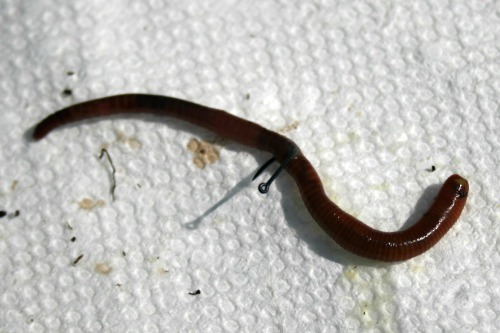Achieve a Greener Lawn with the Help of Red Wiggler Express Lawn Care Products
Achieve a Greener Lawn with the Help of Red Wiggler Express Lawn Care Products
Blog Article
How Red Wigglers Can Change Your Composting Experience
The assimilation of red wigglers right into composting methods supplies a transformative technique to waste management and dirt enrichment. Understanding the particular needs and advantages associated with preserving a growing worm populace is important for optimizing their capacity.
Benefits of Red Wigglers
Red wigglers, scientifically recognized as Eisenia fetida, are a keystone of effective composting systems due to their exceptional ability to decompose raw material successfully. These worms excel in changing kitchen area scraps, lawn waste, and various other organic products right into nutrient-rich garden compost, typically referred to as worm spreadings. Lake Hickory Bait. This process not only reduces land fill waste but also adds to lasting gardening methods
One of the primary benefits of red wigglers is their high reproduction price, enabling them to occupy a composting environment promptly. This fast reproduction improves disintegration prices, causing faster compost production. Furthermore, red wigglers thrive in a diverse variety of problems, making them versatile to numerous composting setups.

Establishing Your Worm Container
(Lake Rhodhiss Bait)To produce an efficient worm bin for composting, careful attention must be offered to its design and atmosphere. A suitable worm bin should be built of materials that are durable yet enable necessary air movement, such as plastic or wood. The size of the container can differ, however a quantity of around 1 square foot per pound of worms is a great starting point.
Ensure that the bin has drain openings to avoid water build-up, which can result in anaerobic conditions harmful to the worms. Additionally, integrating ventilation openings will aid maintain appropriate moisture levels and oxygen circulation.
Following, it is necessary to supply bed linen for the worms, which can include shredded newspaper, cardboard, or coconut coir. This bed linens not only uses a habitat for the worms yet additionally aids in wetness retention.
Placement the worm bin in an area that preserves a temperature level series of 55-77 ° F(13-25 ° C) to enhance worm activity. Avoid placing the bin in straight sunlight or severe temperatures. By following these standards, you can develop a conducive environment for red wigglers, improving the efficiency of your composting process.
What to Feed Your Worms

(Hickory NC Worms For Sale)Red wigglers particularly appreciate soft, damp foods like watermelon rinds, cucumber peels, and banana peels. It is crucial to prevent feeding them citrus fruits, onions, and garlic, as these can be detrimental to their health. Additionally, prepared foods, milk items, and meat needs to be strictly prevented, as they can result in smells and draw in bugs.
Providing a constant feeding routine will help maintain your worm population prospering while boosting the total performance of your composting initiatives. By recognizing what to feed your worms, you lay the groundwork for a successful and lasting composting experience.
Keeping a Healthy And Balanced Environment
Producing a thriving composting atmosphere for red wigglers calls for attention to their habitat, as it directly influences their health and efficiency. The suitable habitat needs to keep a balanced wetness level, typically between 60-70%. Too much wetness can bring about anaerobic conditions, while not enough wetness might dry out the worms.

The bedding product in the compost ought to be diverse and shredded, integrating products like cardboard, paper, and coconut coir. This not only provides a comfortable atmosphere but also acts as a food resource. Lake Hickory Bait. Consistently checking for odors or signs of pests Go Here can aid determine possible problems prior to they escalate
Finally, preserving a balanced pH level, preferably between 6 and 7, makes certain a favorable environment for red wigglers, promoting their ability to procedure raw material efficiently. By dealing with these aspects, you can create a lasting and productive composting community.
Harvesting and Making Use Of Garden Compost
Collecting garden compost from a worm bin is a gratifying procedure that changes organic waste right into nutrient-rich product for gardens and plants. When the composting cycle is complete, normally after 8-12 weeks, it's time to accumulate the vermicompost. The very first step includes dividing the red wigglers from the ended up compost. This can be done making use of approaches such as the "light" approach, where worms are attracted to light and can be scooped far from the leading layers, or by moving the garden compost to one side of the container and adding fresh bed linens to the various other side, urging the worms to migrate.
When the worms are gotten rid of, the remaining compost can be sorted to eliminate any type of larger fragments or undecomposed product. The end product ought to have a dark, brittle texture and a positive earthy smell, suggesting that it is all set for usage. This abundant compost can be used straight to garden beds, blended into potting dirt, or made use of as a top clothing for potted plants. By integrating vermicompost into your gardening practices, you not just improve soil fertility however likewise advertise healthy and balanced plant development and lasting horticulture methods.
Verdict
Including red wigglers right into composting methods considerably improves the disintegration procedure and adds to the manufacturing of nutrient-rich vermicompost. The resulting worm spreadings enhance soil structure, fertility, and microbial task, inevitably promoting healthier plant growth.
Report this page